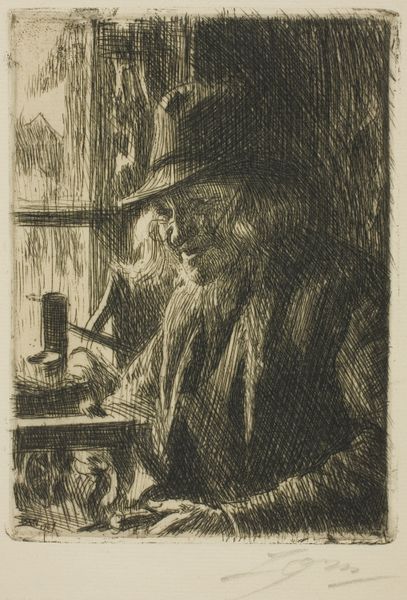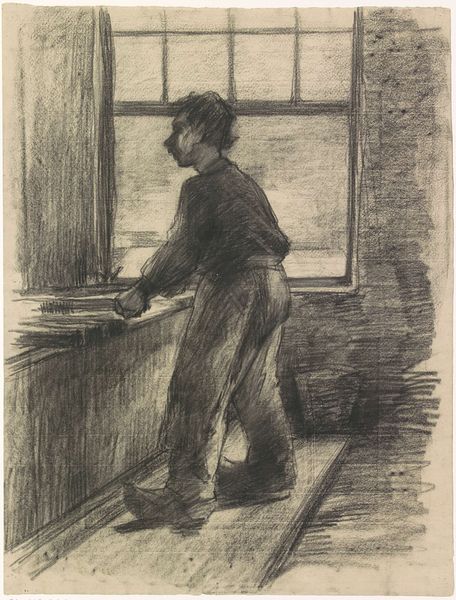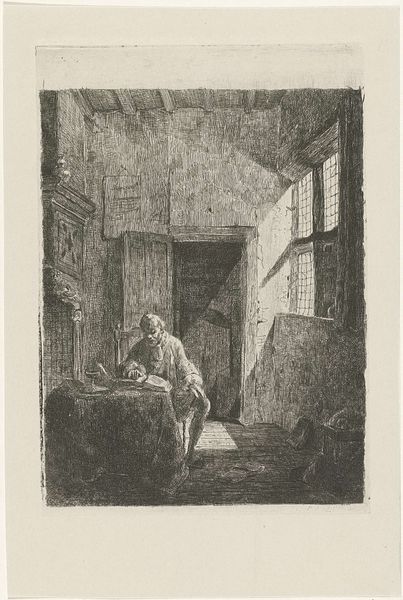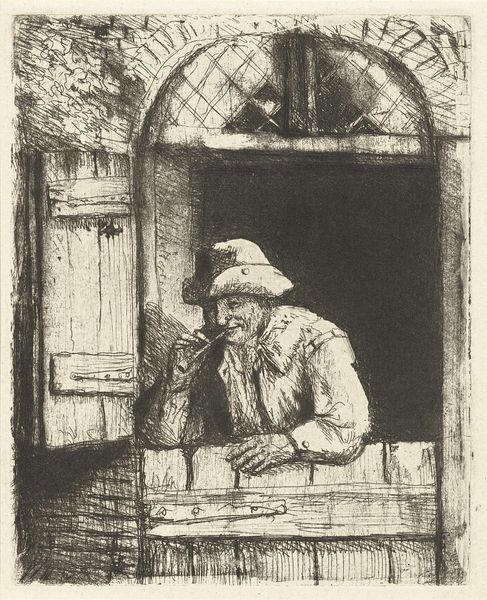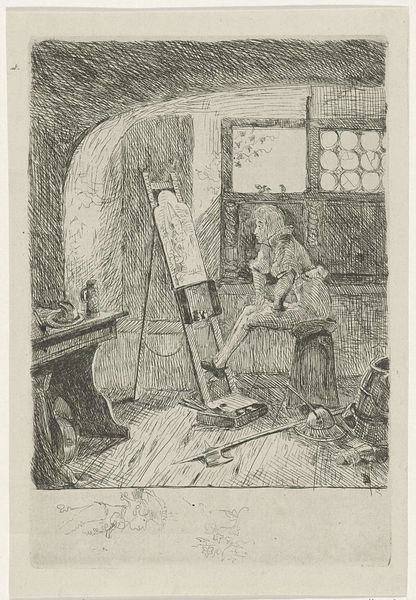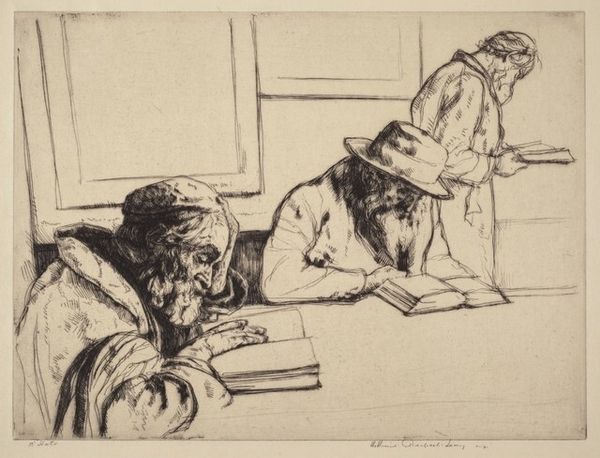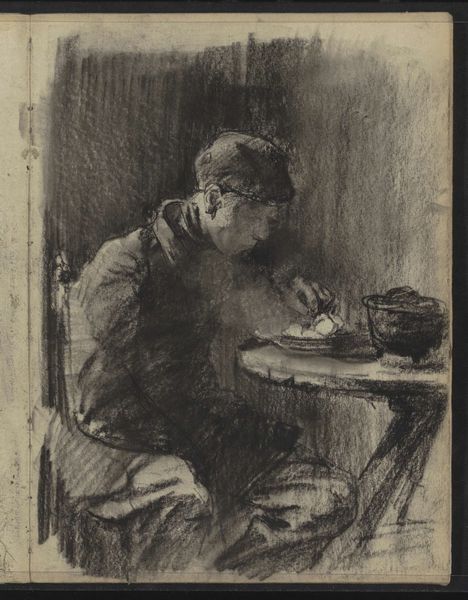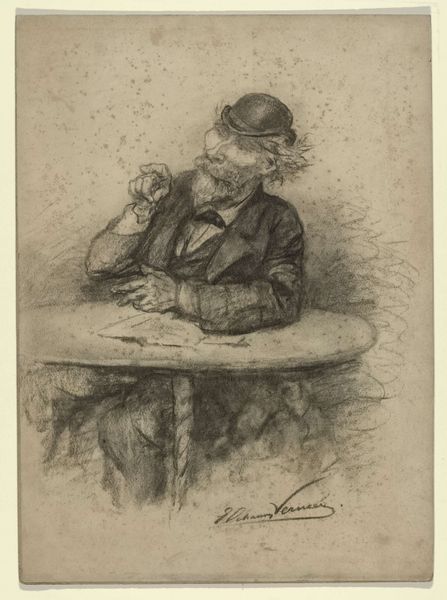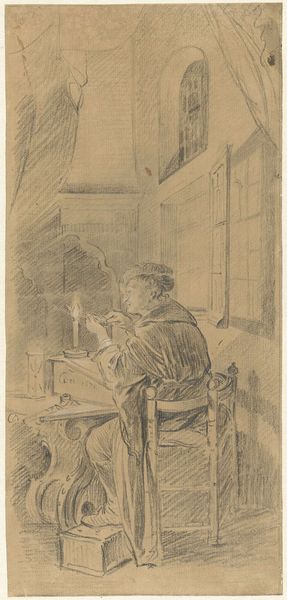
Dimensions: height 80 mm, width 73 mm
Copyright: Rijks Museum: Open Domain
Editor: This is Jan Chalon’s self-portrait, made sometime between 1748 and 1795 using ink through the intaglio method. The image has such a still, almost contemplative feeling. It really draws you in. What historical narratives do you think shape our understanding of this portrait? Curator: Well, consider the context. Self-portraits at this time were becoming more common, reflecting a growing sense of individual artistic identity within the broader societal shifts towards Enlightenment ideals. Editor: Interesting. So the very act of creating a self-portrait was, in a way, making a statement? Curator: Precisely! The act of self-representation challenges previous portrait styles which primarily showcased the wealthy. Furthermore, the act of depicting oneself working, as we see here, reinforces the idea of the artist as a skilled laborer and intellectual, actively shaping their own image and promoting their profession. The setting - in front of a window, bathed in light, the tools of creation on the table - does it not invoke similar paintings of the Renaissance? Editor: I see what you mean! It elevates his status by connecting him to a richer artistic legacy. How do you think contemporary audiences would perceive it back then? Curator: A viewer during that period, familiar with the art world and its established hierarchy, would likely view it as a conscious effort by Chalon to insert himself into a lineage of celebrated artists. This in turn provides some clues as to the social ambition and entrepreneurialism among baroque painters. Editor: That makes a lot of sense. I never considered how deliberate image crafting was back then. Curator: These kinds of early portraits are all the more impactful when one analyzes how the museums shaped the way we view these paintings later. Editor: Right, I hadn't thought of it that way before. Thanks for offering a completely new angle. Curator: Indeed. Seeing it displayed as "art" transforms its role in the cultural sphere, rather than its significance during production.
Comments
No comments
Be the first to comment and join the conversation on the ultimate creative platform.

